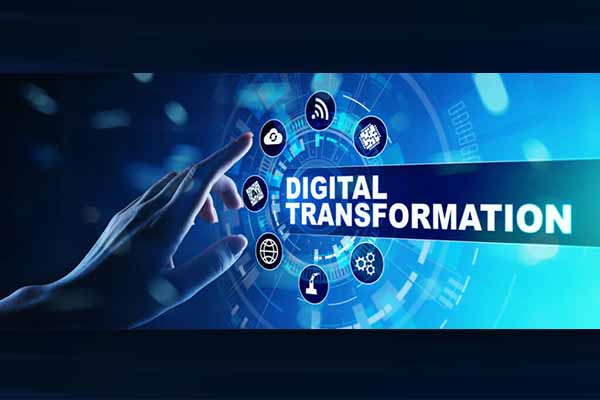Here’s a common scenario in an organization – meetings and more meetings are called to decode the Digital Transformation buzzword! But each time executives leave the boardroom thinking they understand what needs to be done, they end up misunderstanding each other.
The biggest problem with this communication breakdown is that without a common and clear understanding of what “transformation” is, it’s very challenging to come up with pragmatic solutions!
According to Blissfully’s research, small organizations (with 1 to 10 employees) use an average of 26 applications, while large organizations (with 251 to 1,000 employees) use 124 applications on an average or more!
We call this Digital Confusion
A mid to large size organization has all kinds of projects going on constantly – from trying to automate a process, build a new analytics tool, create an innovation lab, or roll out mobile apps. But too often, it really is nothing more than a list of disconnected endeavors. To compound this further, with the introduction of newer piecemeal applications, the organization suffers in making effective use of time as the newer apps would mean team members spending even more time to find their way around and learn how to work with each application that has specific feature controls, diverse user interface, and processes. Also, the lack of interoperability and constant switching between tools results in data silos, data duplication, and lengthy workflows, consequentially delayed and flawed decision making.
Furthermore, enterprise architects are having to choose from a confusing array of transformation journeys. There is Robotic Process Automation (RPA) and Digital Process Automation (DPA) – which itself is subdivided into two categories: DPA-deep and DPA-wide and dynamic case management (DCM).
Despite digital infrastructure being the key enabler for the 21st-century economy, it has been unsuccessful in creating the desired impact. Organizations have been unsuccessful in leveraging the full potential of digital technologies and, sadly, continue to work in denial.
There has never been a larger need than today for greater data integrity, intelligent decisions, and operational efficiency, acknowledging Forrester’s assertion that it is important for organizations to take a holistic view of what they are hoping to achieve before deciding on which approach to take.
From digital confusion to digital unification
To fight this state of digital confusion, the world needs Digital Unification of enterprise assets. It needs Unified and Autonomous technologies for delivering self-driving enterprises that can learn, self-correct, and continuously evolve to deliver next-generation human experiences.
Keeping the entire enterprise connected to create a value chain driver
Enterprises need to keep the entire system connected to create a value chain driver. From employees to customers, channel partners, machinery, facilities to third-party resources, everyone needs to be on one unified platform. That will ensure that 100% of the enterprises’ internal and external resources converse in one language, on one platform. It will also increase efficiency, transparency, and actionable business intelligence in real-time.
Developing workable solutions will be faster and more impactful.
Eliminate the multiple applications approach for a unified platform
Enterprises work with too many applications and processes that do not communicate with each other. They work in silos and tend to confuse the system, eventually confusing the people and decision-makers. Having a unified operating system on one platform that can replace most of these applications and software will bring enhanced agility, intelligence, cost competitiveness, and scale.
Integrating AI & ML in decision-making
Enterprises need to free their human resources from mundane and repetitive jobs allowing them to innovate, experiment, and create meaningful business capabilities. By integrating AI and ML-enabled systems that can continuously learn and evolve with every data input and customer feedback, they can increase efficiency and cut down the time taken to make decisions. It is the first step toward building future-ready autonomous enterprises.
Enable remote working with real-time workforce intelligence
Enterprises need to create workforce collaborations that will help unleash the full potential of the teams with real-time workforce intelligence. Virtual offices that function on a unified platform, powered by AI-based performance analytics and metrics, allow the management to track performances with precision. It not only reduces dependency on physical infrastructure and saves the cost of running the office, but also cuts down carbon footprint by 50%. It is a win-win situation for the enterprise, its people, and the environment. Something we all have experienced in the pandemic and post-pandemic era!
The crux is: Having unified enterprise systems will not only enable real-time decision making, but also enable its people to develop transformative enterprise solutions beneficial to the business, their consumers, and the environment.
About the author:
Mr. Kiran Penumacha is the Founder and CEO of Grene Robotics
















